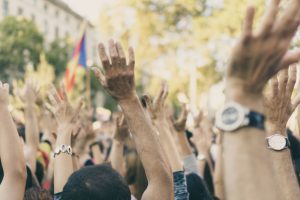
The above photo was taken during a protest in Barcelona in which the protestors are demanding the “Llibertat Presos Polítics” in Catalan, which translates to ‘Freedom to the politically oppressed’. The people in the photo have got two things in common:
- They are chanting the same thing.
- They are all people in favour of Catalonia’s independence from Spain.
To understand the Catalonian independence movement, you have to go all the way back to early 18th century Spain. After the death of the Spanish king Carlos II, there were two candidates to the throne. The first was Philip V, from the Borbón family who supported the then Corona de Castilla, which is the present-day Madrid, Castilla-Leon, Castilla la Mancha, Galicia, La Rioja, Andalucía and Extremadura. He was up against the Archduke Charles of Austria. Charles of Austria supported the then Corona de Aragón which included the present-day autonomous communities of Catalonia, Valencia and Aragón.
These two sides battled for 13 years. In the beginning, Charles of Austria seemed to have better chances of winning, but a series of events led to the victory of Philip V in 1714. We must focus on the end of the war to understand the photograph. The photograph was most probably taken on the 11th of September. The reason for this is because on September 11th 1714, Philip V’s troops conquered Barcelona which was the capital of the Corona de Aragón.
Barcelona was taken, and the nationalist movements began. Catalonia was heavily punished by the new king Philip V. Many restrictions were imposed, including the prohibition for the people of Catalonia to speak their own language.
This war began the nationalist movement, but during Franco’s rule of Spain in 1939-1975, these ideas arose again and started to get stronger. General Francisco Franco hated Catalonia. He made sure that anyone living in Catalonia suffered. He prohibited the use of Catalan and added extra tariffs on Catalonia.
Once Spain entered democracy after Franco’s death in 1975, the movements began to lose attention. But on the 7th of September 2017, the Catalan Government led by Carles Puigdemont, announced that elections for the independence of Catalonia would take place on October 1st of that year, which effectively happened. The Spanish Government announced that the referendum was illegal, but the Catalan Government went on with the process.
After the elections on October 1st, the results were announced with a clear victory for the pro-independence. After the election results were announced, the Spanish Government implemented article 155 of the Spanish constitution which essentially took away Catalonia’s autonomous region’s powers. This led to many violent protests between pro-Spain and Pro-Independence supporters. Once the implementation of the article was announced, some of the politicians involved in the referendum were arrested and taken to court. This case has been called “El juicio del Process”. This case is currently ongoing, and the final sentences are yet to be announced. Some of the politicians involved that were called to the hearing such as Carles Puigdemont have fled to Belgium, which granted them protection even though an international EU arrest warrant has been issued by Spain.
This brings us back to the photograph in which protestors have united to present their ideas on wanting freedom for the politicians who according to them have been wrongly accused and for the freedom of Catalonia as a whole.
Most of the people who vote for Catalonia’s independence are people who firmly believe that the way they’ve been treated over the years has been cruel and because they feel that they are loosing a lot of money since the Spanish Government takes a large part of Catalonia’s GDP and invests it in other autonomous regions.
The tensions in Catalonia keep on escalating, and companies have got very nervous and have started to move their Spanish headquarters to other parts of Spain which has also affected Catalonia’s economy.
For the moment, these protests continue, and the protestors don’t seem to want to back down any time soon. This crisis in Spain is now being broadcasted all over the world, and little by little countries are choosing their sides. But there is one small issue with this, the media isn’t getting the full information. Images have surfaced of the Spanish Guardia Civil beating up Catalan protesters out of contests and stories are being made up from both sides. So in order for people to choose sides, they should get more information and not just rely on one source of news coverage.

I think this is a very solid article. Very factually correct and well structured